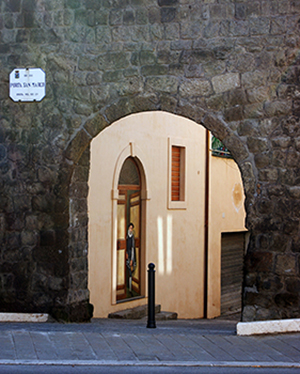
Author:
Location:
PORTA SAN MARCO (GATE SAN MARCO)
HISTORY AND DESCRIPTION
In a nook along the walls that runs along the Monastery of St. Rose, the arc of Porta San Marco, constructed in 1208, is still visible today. Used more for the rural, that is for the service of the big land owners, as way to the Arcionello Valley and the slopes of the mountain Palanzana, the gate would probably constructed around 1213, but its name wasn’t documented until the 14th of December, 1235. In 1237 the trenches were expanded. The fortification coming from the porta San Pietro, crossed the Porta San Sisto, and arrived at the Porta San Marco. In 1486 Porta San marco was subject to some repairs, after that, towards the end of the century it was permanently closed for transit. The Gate re-emerged for the occasion of the construction of the bypass in 1887 and the outline of the gate was made visible in 1960 during the work of the consolidation of the walls. In that occasions, the wall that shut the Porta was destroyed. Almost adjacent to this gate, there was a wide opening supported by a large pillar, what was the once called Gabbia del Crocco, through which a stream, the Sonza, then called Urcionio, was flowing into Viterbo. An epigraph in Latin, hardly readable, placed on this opening recalls how, in 1223, as a result of torrential rains, the river over flowed, causing destruction to the city, and many deaths. The gate in the past was also used as a niche to pray to the Virgin Mary and it was reopened in February 2010.
PORTA SAN MARCO
Traduzione di Marcella Stranieri, University of Maryland, studentessa iscritta al programma USAC presso l’Università degli Studi della Tuscia.
ESSENTIAL BIBLIOGRAPHY
G. Peruzzi; Le tredici porte di Viterbo, in Rassegna storica dei Comuni (1970), anno I, 5-6, pp. 257-266.
M. Galeotti; L’illustrissima Città di Viterbo, Edizioni Studio Pubblicitario Viterbese, Viterbo 2002, pp. 216-217.








